Wonders of the new world
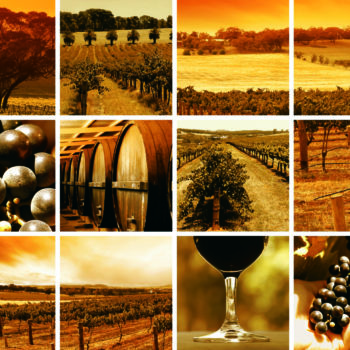
Due to their seriously envy-inducing climates and conditions for growing, matched with a passion for winemaking processes, it’s little wonder that quality Chilean and Argentinean wine producers have built up a steady army of loyal Irish fans, writes Gillian Hamill
17 August 2016
Blessed with a number of ideal geographic features, it is not surprising that excellent wine varietals are produced in both Chile and Argentina. As Wines of Argentina points out, Argentina is one of the world’s nature reserves. “This wealth of natural ecosystems includes vast, highly productive grape-growing regions stretching at the foot of the Andean strip, to the west of the country, from latitude 22° south to latitude 42° south. The cultivated area covers more than 538,071 acres.
“It is in this context, and in the course of five centuries, that Argentina has developed such an extraordinary wine industry,” the association continues. “The altitude, the wide range of temperatures, the local know-how, the new technologies and a deeply-rooted popular wine culture lend our wines their unique identity and quality.” In fact, as Argentina’s national drink since 2010, wine has always been part of the country’s economy and meals. A proof of this, according to Wines of Argentina, is that by the end of the 60s, annual consumption was 90 litres per capita.
Malbec World Day
For many people, when they think of wine and Argentina, Malbec is not far from their thoughts. Many may not be aware however that 17 April is ‘Malbec World Day’ and there is an interesting story behind why this date was chosen to celebrate the popular varietal. Malbec was first brought to Argentina from France in 1853 by Michel Aimé Pouget (1821-1875), an agronomist who was hired by Domingo Faustino Sarmiento to run the Quinta Agronómica de Mendoza. After the French model, this Quinta Normal sought to incorporate new varietals as a way to boost the national wine industry. On 17 April, 1853, with the support of Mendoza’s governor Pedro Pascual Segura, a bill was submitted to the Provincial Legislature for the foundation of a Quinta Normal and a School of Agriculture. The bill was enacted as law by the House of Representatives on 6 September 1853.
By the end of the 19th century, Wines of Argentina writes that viticulture experienced an exponential development in the hands of Italian and French immigrants, and so did Malbec, which adapted quickly to the varied terroirs offered by Argentina’s geography and developed even better than in its original land. In this way, over the course of time and after much hard work, Malbec came to be Argentina’s flagship variety. To the association therefore, 17 April not only represents the transformation of Argentina’s wine industry, but it is also the starting point for the development of Malbec as the iconic variety and international flagship of Argentina’s viticulture.
No chilly reception for Chile
Chile, meanwhile, is a definite hit with Irish wine aficionados. According to ShelfLife’s resident wine expert, Helen Coburn, “even as our economy struggled, Ireland managed to consume nearly 2m cases of Chilean wine, making it the top selling wine country here, with almost 24% market share. Chilean winemakers now aim to push the boat out by persuading Irish consumers to trade up a bit and sample more premium wines from Chile’s upcoming coastal and hill sites.
“At present, about 17% of wine here is sold at above €11, with France and Spain still accounting for a high proportion of top end wines sales,” Coburn explains. “Chilean winemakers reckon they now have wines that can cut into that share. Their country is long, with a huge coastal strip, ideal for cool climate wines, such as riesling and chenin blanc, as well as sauvignon blanc. Warmer sites inland can support grenache and carignan, while the sheltering Andes mountains are not only a source of irrigation but also modify the climate of some warm locations. This allows plantings of cabernet sauvignon and franc as well as merlot, syrah and carmenere. Almost every grape variety can find a suitable site somewhere and Chile’s wine producers are drawing on a much wider selection than they used to. Meanwhile there is an ongoing programme to identify new sites capable of producing wines of finest quality.”
Impact of Brexit
Interestingly, the British decision to exit the UK, represents both challenges and opportunities for Chilean and Argentinean wine producers. Reflecting on the possible effects of Brexit on the Chilean wine industry, Wines of Chile president Mario Pablo Silva said: “For our industry this can be an opportunity to grow our sales in the UK. The distancing of the UK from the EU should lead to higher consumption of New World wines and Chile should be at the head of this, while simultaneously consolidating and enlarging its market in continental Europe.”
True reflection of each terroir
 Doña Paula was established in 1997 in Mendoza in Argentina. All of its wines are produced on its 100% owned vineyards which are planted in the best areas of the country, creating the most faithful expression of each terroir. The wines are a true reflection of the vineyard from which they come. They are elaborated through winemaking processes noble to the typical characteristics of each variety and each region.
Doña Paula was established in 1997 in Mendoza in Argentina. All of its wines are produced on its 100% owned vineyards which are planted in the best areas of the country, creating the most faithful expression of each terroir. The wines are a true reflection of the vineyard from which they come. They are elaborated through winemaking processes noble to the typical characteristics of each variety and each region.
Los Cardos: Cardos is the Spanish word for a thistle, the unequivocal symbol of the presence of good terroir. The vineyards for these wines are located more than 1,000 metres above sea level, at the foot of the Andes. The results are fresh and fruity wines.
Doña Paula Estate: The vineyards for Dona Paula Estate wines are managed with dedication and hard work resulting in wines of an intense flavour and character.
Selección de Bodega Malbec is the result of an assemblage of best terroirs: Finca El Alto, whose soils are mainly clayey; Finca Alluvia, which has mineral and rocky soils; and Finca Los Indios, which has calcareous and sandy soils. The wine is a deep violet colour. Aromas of berries, with graphite, black cherries and spicy notes. Great concentration, firm tannins, fresh acidity and long finish.
Chile’s first winery
Viña Carmen was founded by Christian Lanz in 1850 making it Chile’s first and oldest winery. Christian named the winery after his beloved wife.
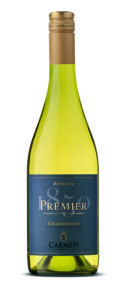
The winery now has a vast history marked by milestones and successes earned through its experience, enological heritage, and tireless search for quality and excellence.
Today Carmen is available in nearly 50 countries and with more than 160 years in the industry, the winery with the most experience in Chile. Its many achievements and triumphs demonstrates its tremendous consistency to the quality of its wines and its commitment to making wines capable of winning over those who try them while generating unique and unforgettable experiences.
Cycling ahead!
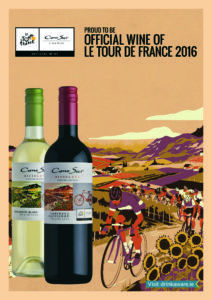
The limited edition Cono Sur Bicicleta packaging will remain on shelf for the remainder of the cycling season
Cono Sur’s famous Bicicleta range of wines was revamped this summer with beautiful limited edition labels featuring artwork exclusively commissioned by esteemed British artist Eliza Southwood.
The labels celebrate the beauty and passion of cycling and were launched by Irish cycling legend Seán Kelly, who was the perfect ambassador given many of the values he shares with Cono Sur: hard work and dedication with the aim of achieving the very best.
Cono Sur was the world’s first carbon-neutral winery, and the bicycle has become a symbol that honours their employees and represents their commitment to developing a viticulture both in terms of quality and with respect for the environment.
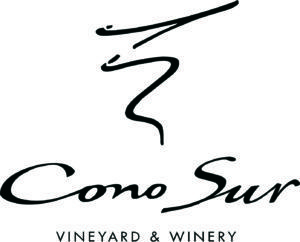 As a result, Bicicleta, Cono Sur’s most popular range, is named after the bicycles the brand’s workers use to get around the vineyards, helping to keep carbon footprint low and grapes at optimum quality.
As a result, Bicicleta, Cono Sur’s most popular range, is named after the bicycles the brand’s workers use to get around the vineyards, helping to keep carbon footprint low and grapes at optimum quality.
The limited edition packaging was released in time to celebrate Cono Sur’s ongoing sponsorship of the Tour de France, and though the Tour is now finished for another year the bottles will remain on-shelf for the remainder of the cycling season, including the famous Vuelta a España (Tour of Spain) in August and the historic Il Lombardia in Italy in September.
The Cono Sur Bicicleta wines have an RSP of €11.99.
Undeniable courage
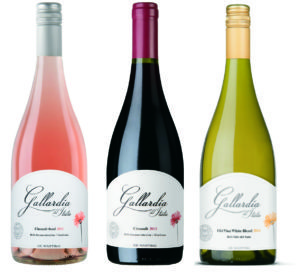
The De Martino Gallardia del Itata range pays homage to the grape varieties of the Itata River Valley in the southern region of Chile
De Martino’s pioneering commitment to Chile’s wine history, land and traditions has led to the rediscovery of vines and Chile’s many and varied ‘terroirs’ lost over the years. Led by chief winemaker, Marcelo Retamal (named 13th most influential winemaker in the world by Decanter Magazine), a veritable crusade first initiated in 1996, has resulted in the discovery of the Itata River Valley, 460 miles south of Santiago. The first grapevines, brought by the Spanish conquistadors, were planted in Itata in 1551 making it the oldest wine region in Chile.
In the Itata Valley, De Martino has produced the most natural wines possible with little human intervention. Grown in the granite rolling hills of the Guariligue, the vines are tended using sustainable and traditional methods with no irrigation.
As a result of this pioneering work, Febvre now introduces three stunning wines from the De Martino Gallardia del Itata range that pay homage to the grape varieties of the Itata River Valley, located in the southern region of Chile:
Gallardia Cinsault Rosé 2014, a pale rose but the colour belies the red fruit aromas with a delicate floral note to the nose.
Gallardia Old Vine White Blend 2014, a fresh, elegant wine, notable for its enhanced, floral flavour with well-balanced acidity
Gallardia Cinsault 2014, an intense wine displaying cranberry and redcurrant fruits with fine tannins and a twist of white pepper on the finish.
Both the Gallardia Cinsault 2014 and Gallardia Cinsault 2014 scored 90 points in Wine Advocate 2016. (RRP: €18 for each wine).
“Gallardia” means bravery in Spanish. It was this courage that allowed the dry-farmed Itata grapevines, descendants of the first vines planted in Chile, to withstand the ravages of time and the tenacious influences of the Pacific Ocean.
The wine range is also named Gallardia in honour of the delicate, daisy-like flower of the same name which vibrantly fills the Itata Valley with colour and aroma, thereby symbolizing the fortitude of local vegetation.
Enquiries to Febvre & Company Limited:
Tel: +353 1 2161400 | Fax: +353 1 2959036 | Fax:+353 1 2941278 (orders)
Highfield House, Burton Hall Road, Sandyford Industrial Estate, Dublin 18.
Web: febvrewines.ie
New World Winery of the Year
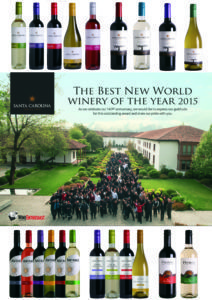
Ampersand supplies Santa Carolina wines to the Irish market, delivering wines that express origin, personality and freshness
Santa Carolina has a diverse portfolio, offering consumers excellent quality wines in all price ranges. In 2015 the winery celebrated its 140th anniversary and was awarded the title of New World Winery of the Year by the recognized Wine Enthusiast magazine. Among the factors the judges considered when selecting Santa Carolina as the Best New World Winery was the winery’s tradition, extensive wine portfolio and outstanding ratings. The award also recognised Viña Santa Carolina’s support to innovation and development projects, its presence in more than 90 markets and reaching sales of 25 million bottles of fine premium wines.
Ampersand has supplied Santa Carolina wines to the Irish market for over 20 years. This diverse portfolio offers wines that express origin, personality and freshness and are ideal for any occasion.
The Antares brand continues to be a success with Irish retailers and consumers. Named after the brightest star in the southern sky of Chile, the wines are fresh and easy to drink, appealing to the explorers of the world. These vibrant wines originate close to Patagonia, among volcanic valleys with maritime influence and seducing breezes.
Santa Carolina Estrellas is a line of young wines of recognisable varietal personality and consistent quality. The wines are produced in the Rapel Valley, one of the best terroirs of Chile’s central zone, where the wide array of microclimates allows for the cultivation of many different varieties.
Santa Carolina Reserva Estate wines are born from the vineyards of Chile’s most reputed winegrowing valleys. Each variety, with their particular aromas and flavours reflect Santa Carolina’s philosophy that seeks to portray the strong links between the land, the climate and the fruit. Discover a taste of each region through these elegant, fruit-driven and complex wines.
To place an order, contact your Ampersand sales representative.
www.ampersandsales.ie Tel: 01-4130100 Email: info@ampersandsales.ie
Wine manager: Willie Dardis 086 2479514 Email: willie@ampersandsales.ie



 Print
Print
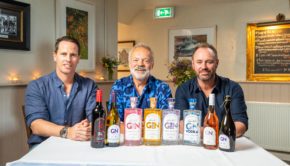



Fans 0
Followers